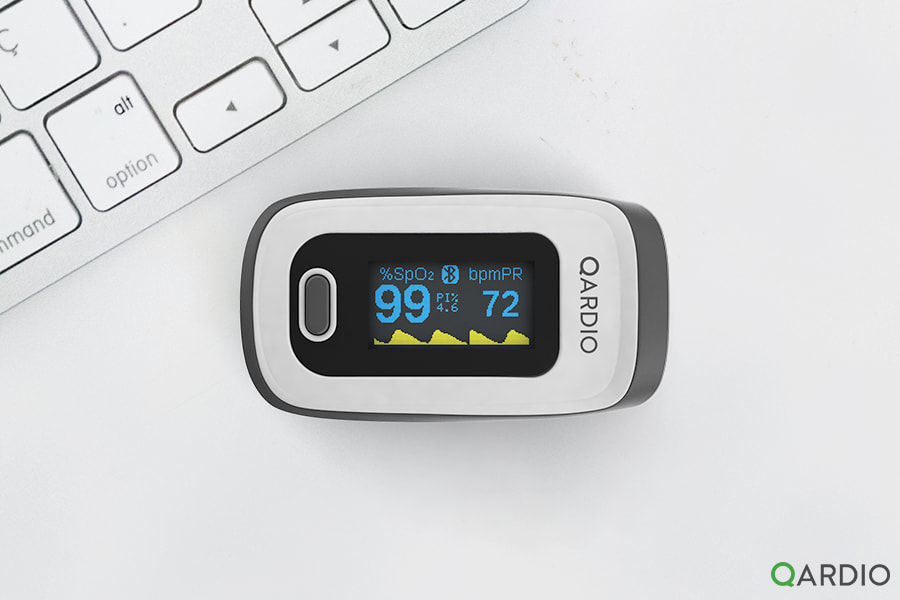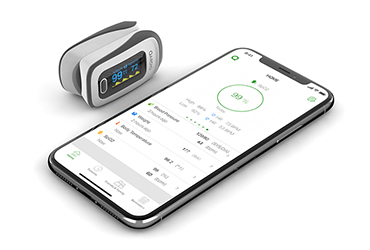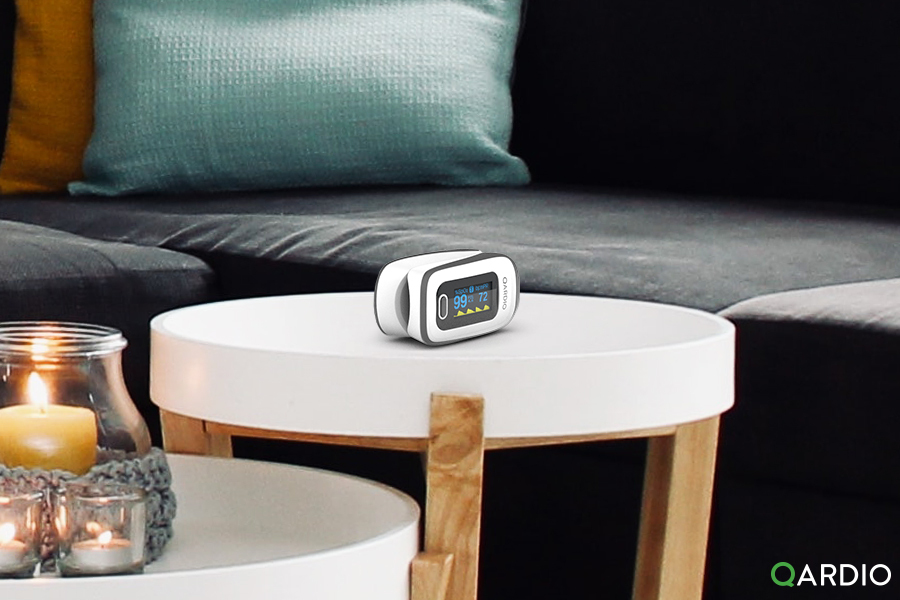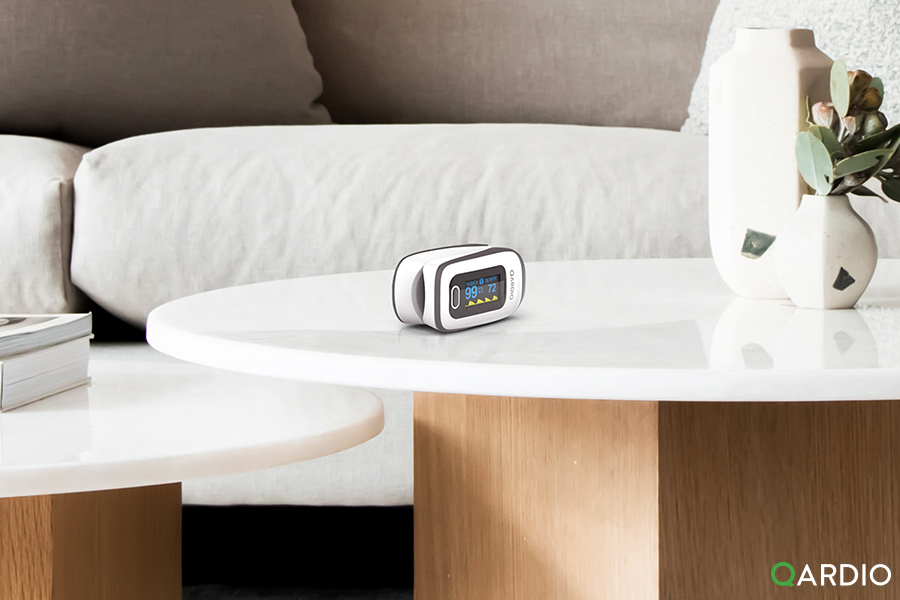Pulse oximeters have been around for a while. They were invented in the mid-1970s and although in the beginning they were only seen in clinics and hospitals they are now available to the general public.
QardioSpO2 is the newest addition to the Qardio family of products. By the time you are reading this article, you might already have a QardioSpO2 or might be considering purchasing one. It does not matter in which situation you are because at this point you might be wondering: Why is having a pulse oximeter at the home now important? What is the meaning of all the readings shown in the QardioSpO2? Does it measure more than oxygen saturation?
What is Oxygen saturation (%SpO2)?
Your body needs oxygen to perform any action. Since oxygen cannot travel through your body by itself, it needs to be attached to your blood. When oxygen gets combined with the hemoglobin proteins found in your blood, oxyhemoglobin (SpO2) is produced.
QardioSpO2 measures the levels of oxyhemoglobin in your blood. When levels are above 95%, it means there is enough oxygen in your blood and your body can function properly. However, when that level goes below 92% you might be at risk of hypoxemia (low oxygen saturation) and your body could start facing difficulties to perform its functions. These values can be found on the left-hand side of your QardioSpO2 screen.
What is the pulse rate (bpmPR)?
On the right-hand side of the QardioSpO2 screen, you can find your pulse rate. Also known as heart rate, it is the number of times your heart beats per minute. A normal heart rate, while resting, should be between 60 and 100 beats per minute. However, when levels are above 100 beats per minute while resting, this is known as fast pulse rate or tachycardia, and it can be related to a number of conditions such as hypertension. For more information about fast pulse rate, please check out our article ‘’Tachycardia, fast resting heart rate and your heart health.’’
On the other hand, if your heart rate is below 60, this is known as slow pulse rate or bradycardia. Many athletes have low pulse rates and it is normal for them to see their readings below 60. However, if you start feeling unwell and your heart rate is below 60, this might indicate a problem with your heart and medical attention will be required.
What is the plethysmograph?
The plethysmograph is the yellow chart you will find on the bottom of the QardioSpO2 screen. In medicine, a plethysmograph is an instrument that measures the changes in volume within an organ or the whole body as a result of fluctuations in the amount of blood or air it carries. The QardioSpO2 plethysmograph measures the change in the volume of arterial blood with each pulse beat. These measurements help you understand your heart rhythm pattern. Since the heart’s main goal is to pump blood to the rest of the body, knowing your normal heart rhythm pattern is important so you can detect when there might be an abnormality. This can indicate early signs of heart failure.
What is the perfusion index (PI%)?
If you check the center of your QardioSpO2 screen, you will see a small symbol noted as PI%. This is called the perfusion index and it determines the pulse strength at the sensor site. The normal perfusion index (PI) ranges from 0.02% to 20%. If the perfusion index is at or below 0.4% showing weak pulse strength, then the oximeter reading can be unreliable. Peripheral artery diseases, diabetes, obesity, blood clots, etc. are the reasons for poor perfusion.
Connect your QardioSpO2 to the Qardio App for remote monitoring
Have you checked all your readings in your QardioSpO2? It is important for you to keep track of your values so you can determine when something is not right. QardioSpO2 works with the Qardio App so you can store all your readings and keep track of the changes over time and take early action if needed.
Sources




